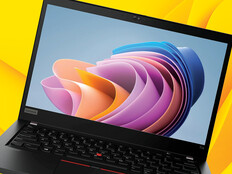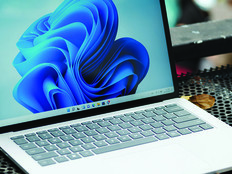Sony's Premium Notebook
The Sony
Vaio Z-Series line of notebooks puts a premium on portability without
sacrificing performance. With native 1600x900 resolution and a lightweight,
thin LCD screen, the Z-Series both looks cool and gets work done.
End-User Advantages
The first thing I noticed about the Sony Vaio Z-Series notebook is its sleek
design. There’s a slightly raised platform for each wrist. The keys
rise up individually through the base with space between them. For users with
large fingers, this means easier, more accurate typing. Unlike many notebooks,
the Z-Series’ touchpad sits out of the way of your wrists, reducing
inadvertent mouse movements or clicks.
Just above the keyboard on the right are four extra buttons you won’t
find on other notebooks. A button marked “Assist” launches the
handy Vaio Care troubleshooting application, another button opens Sony’s
Media Gallery, and a third button pops open the DVD burner. The fourth button
is programmable, so you can set it to open e-mail, a browser or a favorite
application — all at a single touch.
If you’re like me, you can’t get enough USB ports. The Sony Vaio
Z-Series notebook has three: two on the left side and one on the right. This
is much more convenient than placing them all at the rear of the notebook;
and with ports on each side, southpaws and right-handers alike won’t
have to switch hands when plugging in devices. It’s a small touch, but
the kind of engineering that separates Sony from its competition.
The ultra-portable business-class Z-Series is almost as light as a netbook,
coming in at slightly more than 3 pounds. Mostly because of its incredibly
thin 13.1-inch diagonal LCD screen, the Z-Series measures 1.25 inches at its
thickest point. Its 12.4-inch-by-8.3-inch frame comes in four colors, so you
always look good, whether traveling or in the office.
Why It Works for IT
Somehow, Sony has managed to pack a lot of punch in this little form factor.
The Z-Series comes with an Intel i5 M520 2.4-gigahertz processor, upgradeable
to an i7. A standard 4 gigabytes of DDR3 RAM can be upgraded to 8GB, which
can be used by the 64-bit Microsoft Windows 7 operating system and the NVIDIA
GeForce GT 330M graphics card. On a standard 3DMark06 benchmark test, the
basic Z-Series comes in at 6189 points, good enough for most standard business
applications.
One of the interesting features that may extend battery life is the Dynamic
Hybrid Graphics system. Located in the upper right corner, it lets the user
easily change between different power modes without opening the Control Panel.
There’s a Speed setting that makes the notebook work more quickly;
a Stamina setting that prolongs battery life; and an Auto setting that flips
between the two. Although users can always adjust the mode through the Control
Panel, I wouldn’t suggest doing so because it shortens battery life.
This little tool makes it easier to get the most out of the battery.
Even the most basic version of the Z-Series is packed with features, such
as a fingerprint reader located just below the touchpad (which prompts you
to scan in multiple fingerprints, just in case you damage one of your fingers).
There’s also a built-in webcam, Bluetooth 2.1, 802.11 a/b/g/n for wireless
connections and even a Verizon air card for complete connectivity.
Disadvantages
Sony makes a quality product, and the Vaio Z-Series is no exception. But
with its many features, light weight and respectable brand, this notebook
comes at a fairly steep price. The least expensive model costs slightly more
than $2,000.
Also, the bottom of the notebook isn’t flat. The back of the unit has
a bump that runs along the width, which turns the notebook a bit toward the
user when it’s placed on a horizontal surface. For some reason, this
just didn’t feel right, but some people might actually like this feature.
The Z-Series notebooks are built with solid-state drives, so the units run
quietly. But when you push the notebook’s processor, a fan in the upper
left corner spins up smoothly to eject the excess heat.
At its maximum power, the fan can be loud — and that end of the notebook
can get really hot. In fact, it can get so hot that there’s a warning
label on the back of the unit that instructs the user not to put it in contact
with bare skin. But the computer did not seem to get hot very often; unless
you actually place your notebook in your lap, this probably won’t be
an issue.









